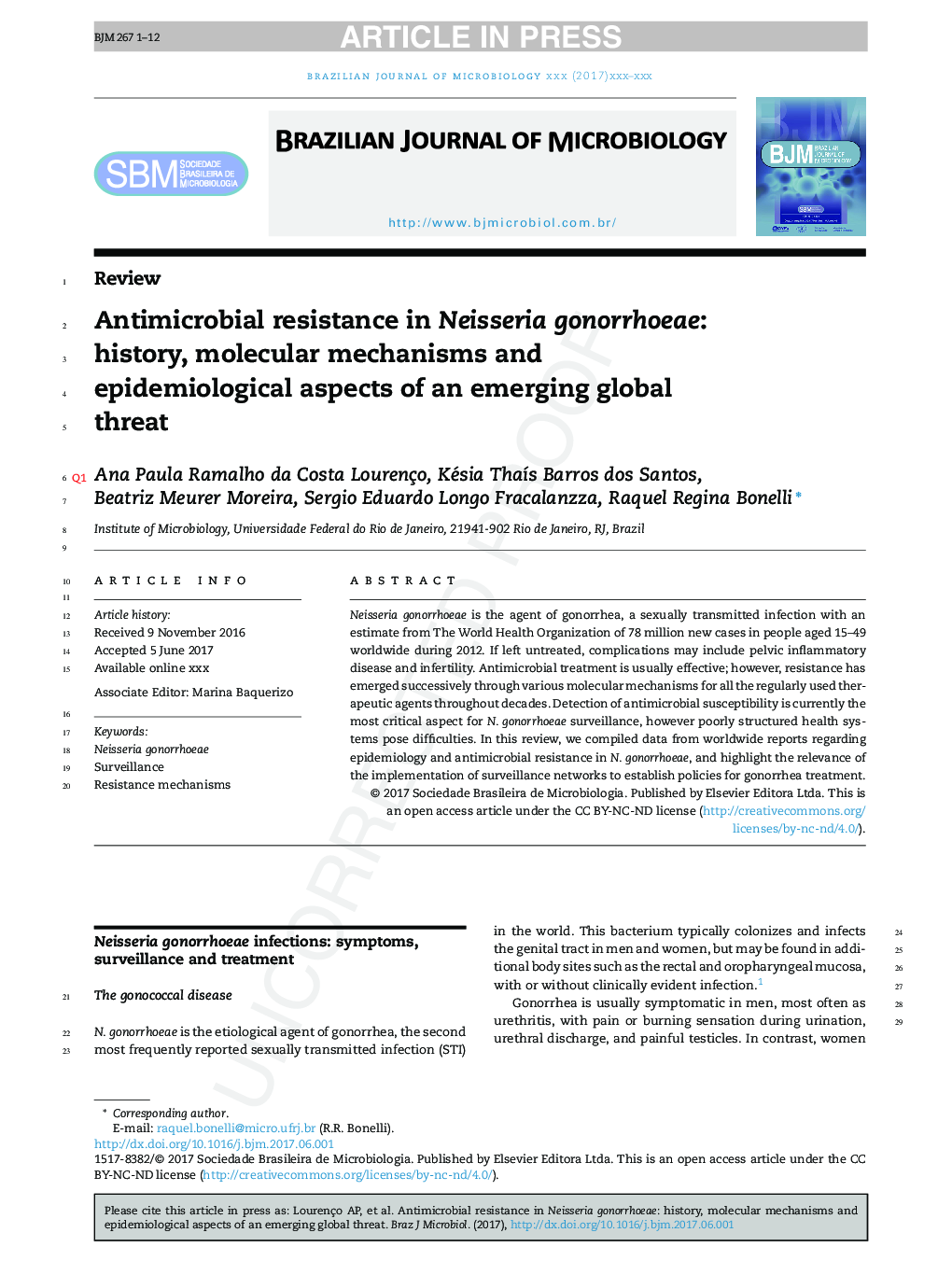| Article ID | Journal | Published Year | Pages | File Type |
|---|---|---|---|---|
| 8842546 | Brazilian Journal of Microbiology | 2017 | 12 Pages |
Abstract
Neisseria gonorrhoeae is the agent of gonorrhea, a sexually transmitted infection with an estimate from The World Health Organization of 78 million new cases in people aged 15-49 worldwide during 2012. If left untreated, complications may include pelvic inflammatory disease and infertility. Antimicrobial treatment is usually effective; however, resistance has emerged successively through various molecular mechanisms for all the regularly used therapeutic agents throughout decades. Detection of antimicrobial susceptibility is currently the most critical aspect for N. gonorrhoeae surveillance, however poorly structured health systems pose difficulties. In this review, we compiled data from worldwide reports regarding epidemiology and antimicrobial resistance in N. gonorrhoeae, and highlight the relevance of the implementation of surveillance networks to establish policies for gonorrhea treatment.
Related Topics
Life Sciences
Immunology and Microbiology
Applied Microbiology and Biotechnology
Authors
Ana Paula Ramalho da Costa-Lourenço, Késia ThaÃs Barros dos Santos, Beatriz Meurer Moreira, Sergio Eduardo Longo Fracalanzza, Raquel Regina Bonelli,
